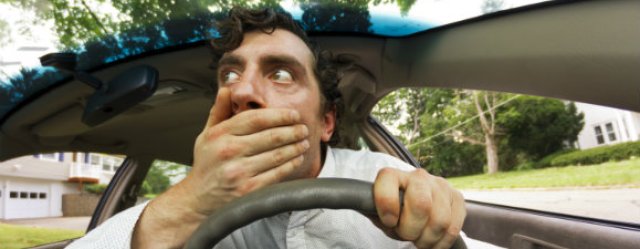Tight Rights and Long Lefts: Driving on the Wrong Side of the Road

Firstly, it’s a bit cheeky of us down in Australasia to call driving on the right, wrong. A colour-coded map of the world shows that in fact, right hand driving countries are far in the majority. As a general rule, England, and former British colonies favour the left, while the USA, Latin America and Europe drive on the right. Asia is a mixed bag: China and the Philippines are right-handers, but in Japan cars travel on the left.
Either way, anxiety induced by driving on the other side of the road from usual, can be a barrier to travel. I spent many years visiting the United States from New Zealand, and for most of that time studiously avoided driving. Finally, the call of the road became too strong, and this year I undertook an epic drive, from San Francisco all the way to Anaheim. These are my top tips on what I learnt:
Long Left and tight right: This was my mantra at intersections, meaning left-hand turns took a longer route around traffic, and right hand turns stayed close to the centre of the road. It’s easy if you are following other vehicles, but if I was at the front of the queue for light changes, I would repeat this, and make a mental note of where I had to go before the signal change.
Use Helpers: Another adult in the car to navigate and cross check with, is ideal. I didn’t have that, but I did find my hired GPS invaluable. Adding one to my car-hire was a significant cost, but having a big screen and up to date maps was preferable to a less reliable phone app. With plenty of notice for turns and lane changes, I could plan my line in advance.
Spend some time adjusting your mirrors: It’s not just the side of the road that’s different, everything in the car is reversed, including your blind spot. After a couple of blasts from the horns of drivers behind me, I realised I just wasn’t seeing as much as I should. The other problem with having everything in the car backwards; expect that you will frequently turn on your windscreen wipers when you meant to indicate a turn!
Beware of danger times: If you are travelling in a stream of traffic, you can just follow the leader. Danger occurs when there is no other traffic to use as a reminder. Many tourist accidents occur in sparsely populated regions. This is often combined, ironically, with having a break from driving. My biggest near-miss was in the evening. I had eaten a meal, and was relaxed. I got back in the car, and went into ‘auto-pilot’ when turning out of the restaurant. Luckily, the headlights of a single on-coming car made me realise I was about to make a big mistake.
Think about where you start your journey: I did this all wrong, by picking up my car at busy Fisherman’s Wharf, and had to navigate out of the city. I was so stressed, that for a brief minute, I actually ended up driving on the street car tracks on the Embarcadero, while I got my bearings. Now that’s embarrassing! A much better option would have been to choose a suburban pick-up point, with quieter roads to get used to the car, adjust the mirrors, and work out the GPS. If only I’d known then to use VroomVroomVroom’s search engine, which would have given me a choice of 37 San Francisco locations. I could have found something closer to my accommodation and out of the bustle of the city.
To guide you on your next car hire adventure, check out VroomVroomVroom’s map below of right and left driving countries.
Legend:
![]() Right Driving Countries
Right Driving Countries
![]() Left Driving Countries
Left Driving Countries


Very useful, Carolyn, but I am not clear what you mean by ‘tight rights and long lefts’
Hey, thanks for reading! Not sure how to describe it more clearly, but it’s the line you need to take to ensure you end up on the correct side of the road at intersections. A right turn is short, so ‘tight’, and the a left-hand turn will always be on the outside of the intersection, so ‘long’. It was a catchy phrase someone taught me, and it really helped! Maybe you need to be in your car to visualise it.